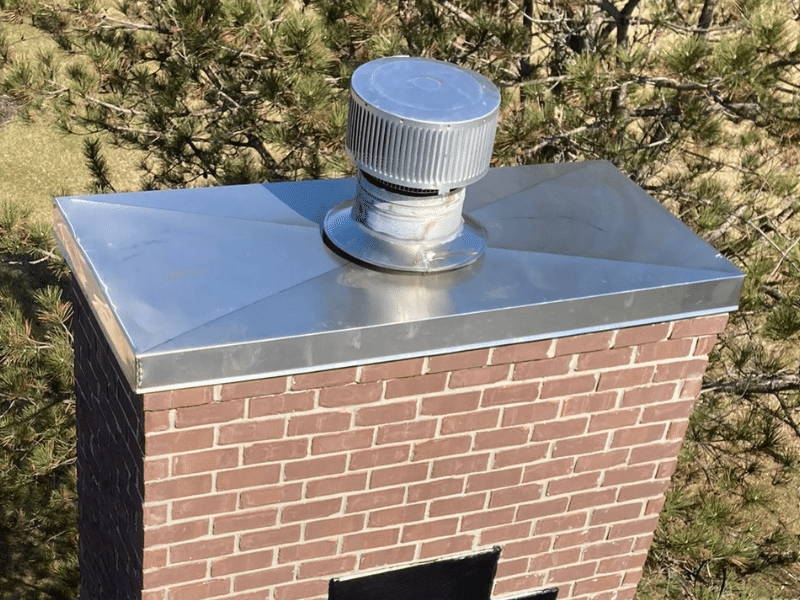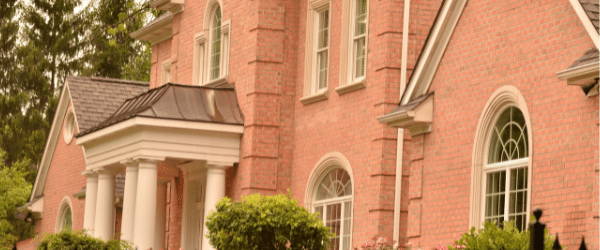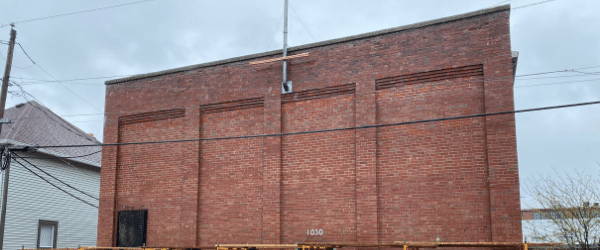
Explore Our Top Masonry Solutions
With over 15 years of masonry experience and producing high-quality results, we'd love to help you tackle your next project.
Explore Our Top Masonry Solutions

With over 15 years of masonry experience and producing high-quality results, we'd love to help you tackle your next project.
Solutions Breakdown
- Brick Repair
- Chimney Repair
- Pavers
- Chimney Crowns
- Flashing
- Chase Lids

Brick Repair
Why is brick repair needed?
Exposure to moisture and the cycle of repeated freezing and thawing that we experience in the Midwest can cause mortar joints between bricks to crack, making your home or business susceptible to foundational and cosmetic damage.
What are the benefits of brick repair?
This improves the overall look of the structure. It reduces the need for other repair or rehabilitation work. Also, protects the walls of the structure from adverse weather. It improves the structural strength of the building.
Types of brick damage we treat
Water damage
Salt damage
Underlying expansion and contraction
Foundation movement
Grade level changes

Chimney Repair
What does chimney repair entail?
Being that no two chimney repair projects are the same, we'll first have to inspect the chimney first to identify if a partial rebuild or a full rebuild is needed.
Why do you repair a chimney?
Small chimney cracks in the summer can become large cracks by the spring. Unattended cracks in the outer brick will deepen the penetrating effect of rain, snow, and ice. The water then works its way down, sometimes between the outer brick and the flashing, and farther inside.

Pavers
How do you repair brick pavers?
Whether you have a sunken paver, a broken paver or a crooked paver, the fix is basically the same — you need to remove the bad guy and replace it with a new brick.
How do pavers get damaged
Everyday accidents are likely to occur and your pavers suffer damage from the occasional contact with bike pedals and dropped items.

Chimney Crowns
Why do chimney crowns need to be repaired?
This is normally due to the fact that most dated chimney crowns
How to spot chimney crown damage?
It can be difficult to spot chimney crown damage because it's impossible to see from the ground and can only be seen when inspecting the chimney from the roof, usually during chimney inspections.
Causes of chimney crown cracks
Improper construction
Natural wear and tear
Concrete shrinkage
Shifting and settling

Flashing
What is flashing used for?
Flashing is a sheet of thin, impervious material used to prevent water penetration or seepage into a home or building and directs the flow of moisture in walls.
How much does flashing cost?
Depending on the size of the roof, the cost to fix flashing is usually priced per linear foot, including the new flashing itself and the caulking used to seal it in place.

Chase Lids
What are chase lids used for?
These are protective coverings that go over the top of your chimney, usually made of steel or copper mesh and come in a variety of styles to match the outside of your home. On top of the mesh ring, is a cap that helps protect your chimney from rain and downdrafts.
How long do chase lids last?
Chimney chase lids and chase covers made of galvanized steel usually need to be replaced about every five years. Copper and stainless steel ones last longer as long as they are not damaged by a severe weather event or fallen branch.
Why they're so important
Safety
Cost
Comfort
Solutions Breakdown
- Brick Repair
- Chimney Repair
- Pavers
- Chimney Crowns
- Flashing
- Chase Lids

Brick Repair
Why is brick repair needed?
Exposure to moisture and the cycle of repeated freezing and thawing that we experience in the Midwest can cause mortar joints between bricks to crack, making your home or business susceptible to foundational and cosmetic damage.
What are the benefits of brick repair?
This improves the overall look of the structure. It reduces the need for other repair or rehabilitation work. Also, protects the walls of the structure from adverse weather. It improves the structural strength of the building.
Types of brick damage we treat
Water damage
Salt damage
Underlying expansion and contraction
Foundation movement
Grade level changes

Chimney Repair
What does chimney repair entail?
Being that no two chimney repair projects are the same, we'll first have to inspect the chimney first to identify if a partial rebuild or a full rebuild is needed.
Why do you repair a chimney?
Small chimney cracks in the summer can become large cracks by the spring. Unattended cracks in the outer brick will deepen the penetrating effect of rain, snow, and ice. The water then works its way down, sometimes between the outer brick and the flashing, and farther inside.

Pavers
How do you repair brick pavers?
Whether you have a sunken paver, a broken paver or a crooked paver, the fix is basically the same — you need to remove the bad guy and replace it with a new brick.
How do pavers get damaged
Everyday accidents are likely to occur and your pavers suffer damage from the occasional contact with bike pedals and dropped items.

Chimney Crowns
What do chimney crowns do?
They prevent water from coming down the flue and into your fireplace, they protect the brick and mortar underneath from gathering and erosion, and they stop sparks from coming out of the chimney and setting fire to the roof.
How to spot chimney crown damage?
It can be difficult to spot chimney crown damage because it's impossible to see from the ground and can only be seen when inspecting the chimney from the roof, usually during chimney inspections.
Causes of chimney crown cracks
Improper construction
Natural wear and tear
Concrete shrinkage
Shifting and settling

Flashing
What is flashing used for?
Flashing is a sheet of thin, impervious material used to prevent water penetration or seepage into a home or building and directs the flow of moisture in walls.
How much does flashing cost?
Depending on the size of the roof, the cost to fix flashing is usually priced per linear foot, including the new flashing itself and the caulking used to seal it in place.

Chase Lids
What are chase lids used for?
These are protective coverings that go over the top of your chimney, usually made of steel or copper mesh and come in a variety of styles to match the outside of your home. On top of the mesh ring, is a cap that helps protect your chimney from rain and downdrafts.
How long do chase lids last?
Chimney chase lids and chase covers made of galvanized steel usually need to be replaced about every five years. Copper and stainless steel ones last longer as long as they are not damaged by a severe weather event or fallen branch.
Why they're so important
Safety
Cost
Comfort

Residential
We are known for our residential masonry contractor projects mainly due to our close attention to detail. We've found that communication is key when working with homeowners and our family-owned business is centered around customer service.

Commercial
Your next commercial job will go much smoother with Hoosier Masonry Solutions. We deliver every project with expertise, quality resources, and the aim to exceed all expectations. Let us help make your life easier and request your free quote today.
100% Insured

Experience

